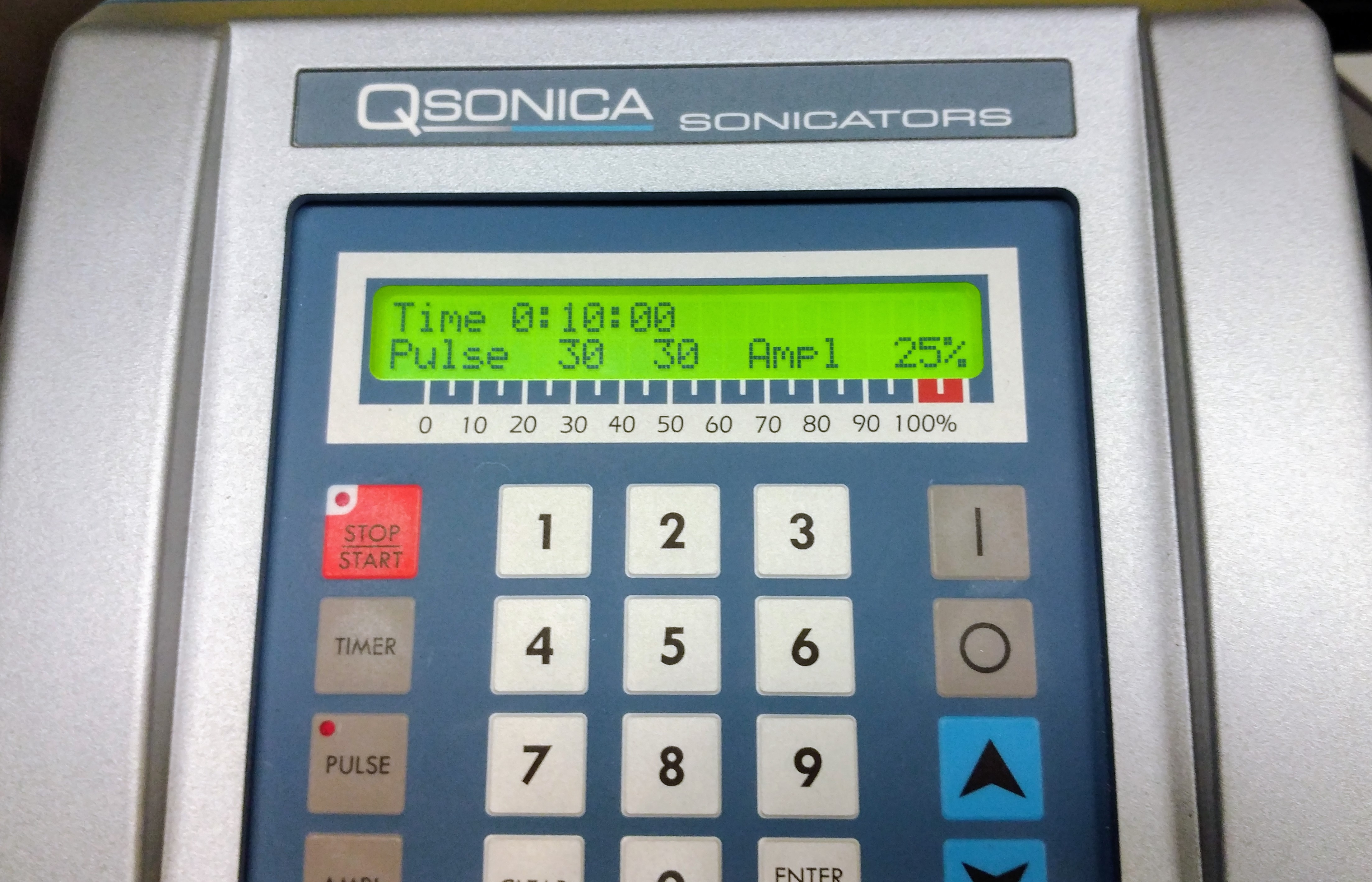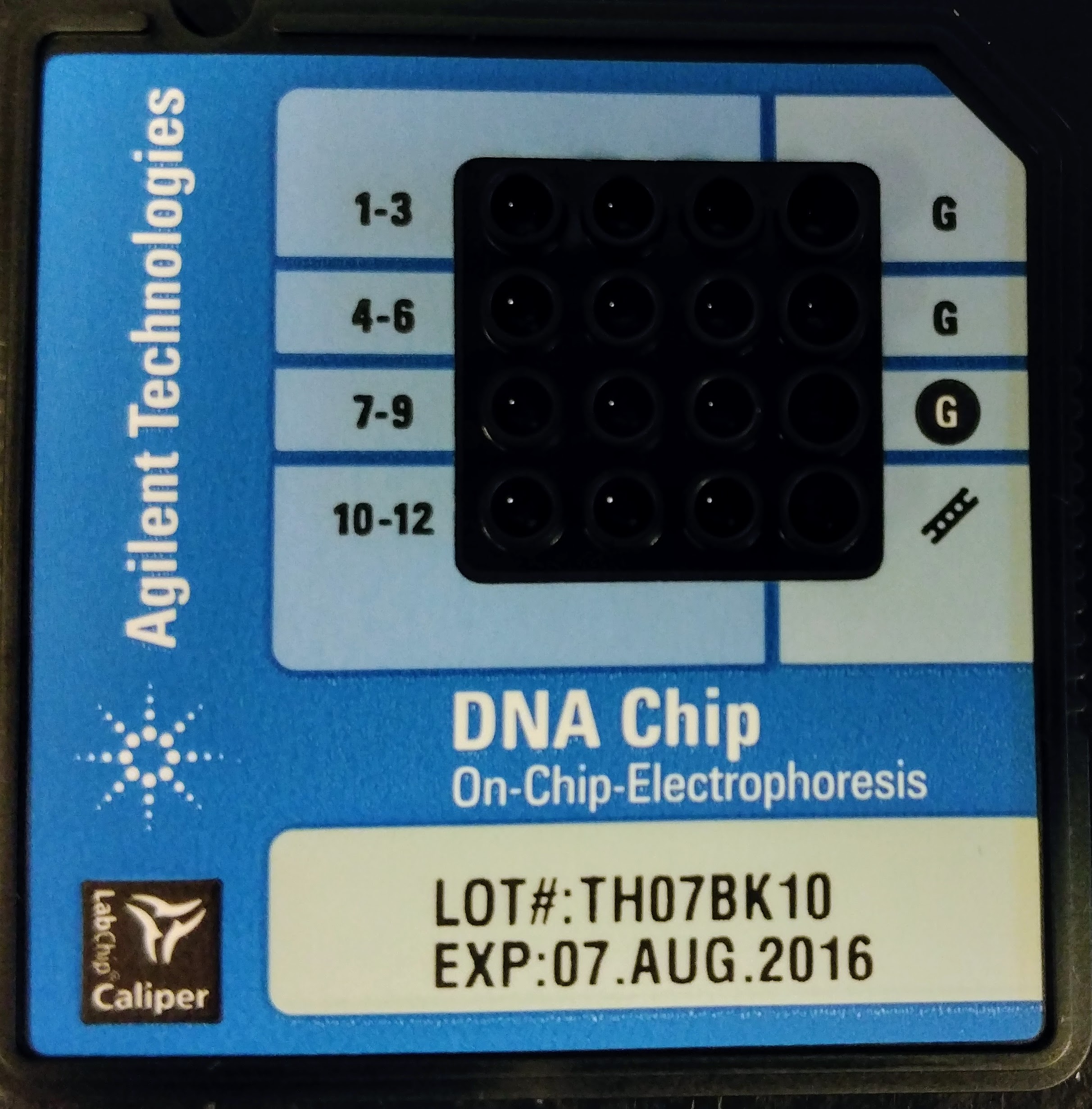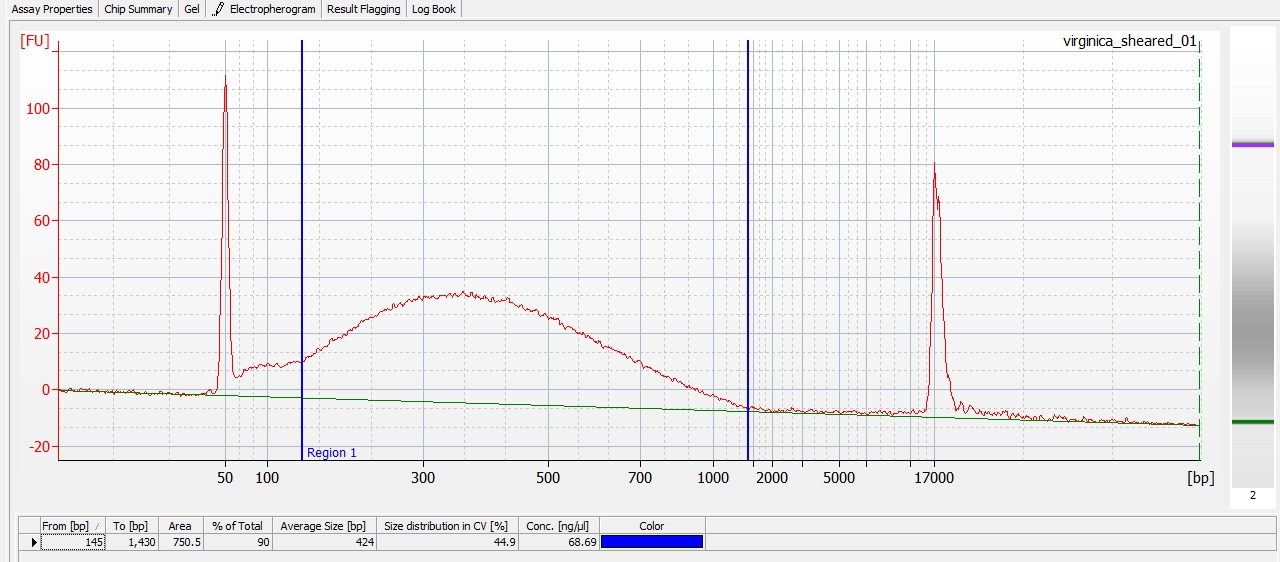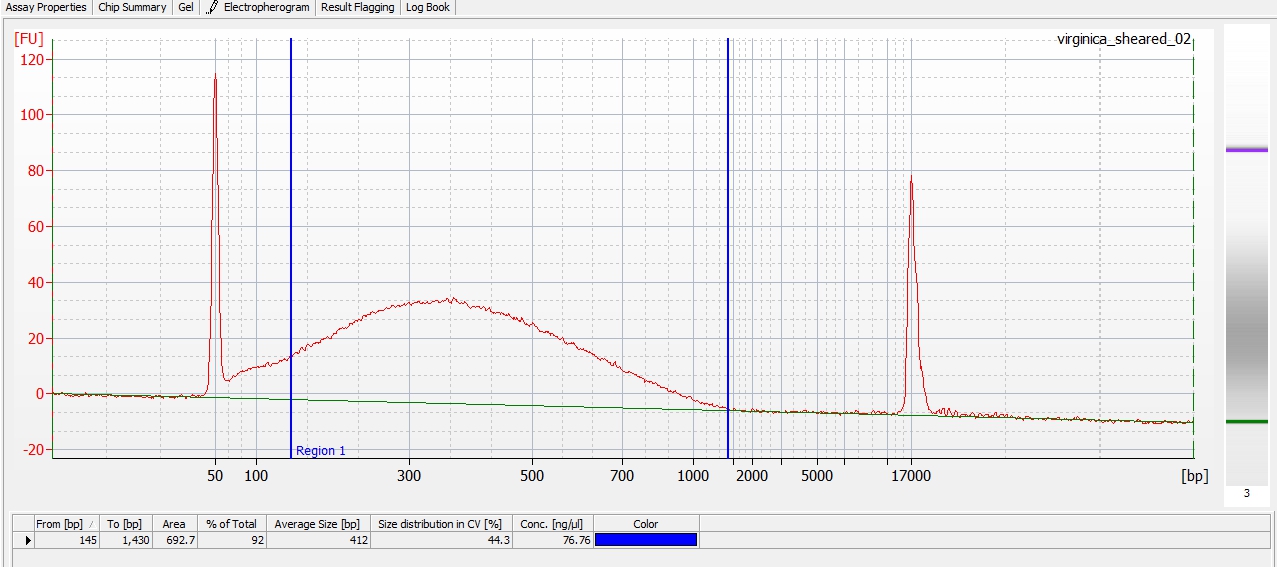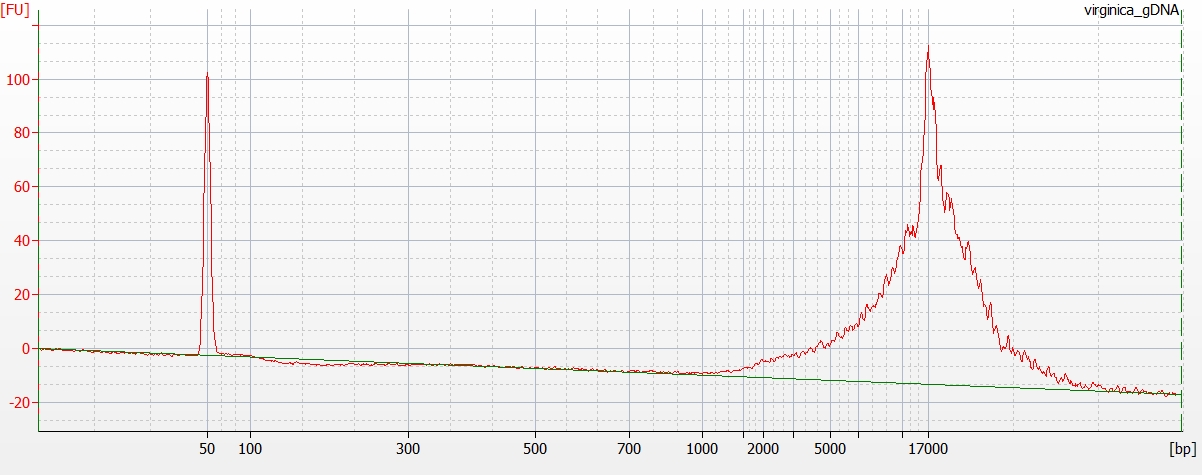Pooled “low quality” samples and pooled “high quality” samples separately (in 1.5mL snap cap tubes) prior to shearing to improve chances of getting similar DNA size ranges.
Samples were selected based on the gels run by Steven on Oct. 17, 2014: http://sr320.tumblr.com/
Low quality samples (5uL from each):
All rows, columns 1 -9
Higher quality samples (5uL from each):
All rows, columns 10 -12
Sheared each samples with the following cycling protocols on the Biorupter Plus (Diagenode):
Low
- 3 cycles of:
- 30 seconds on
- 59 seconds off
High
4 cycles of:
- 30 seconds on
- 59 seconds off
Ran a subset of sheared gDNA (5uL from each pool) on gel to verify final size range:

Gel loading:
Lane 1 – O’GeneRuler 100bp Ladder (ThermoFisher)
Lane 2 – Low quality
Lane 3 – Higher quality
I neglected to run a set of un-sheared DNA.
Both samples appear to have an average size of 200 – 400bp.
After confirming satisfactory shearing, the two samples were combined and run on a 1% agarose low TAE gel (stained with EtBr) for size selection.
O’GeneRuler 100bp Ladder (ThermoFisher)

O’GeneRuler 100bp Ladder (ThermoFisher)

Size range of sheared DNA from 300 – 500bp was excised from gel.
Gel fragment weighed 254mg.
Purified using MiniElute Gel Extraction Kit (Qiagen).
Added three volumes (762uL) of Buffer QG to gel slice.
Incubated ~10mins on rotator until gel slice was fully dissolved.
Added one gel slice volume (254uL) of isopropanol; inverted multiple times to mix.
Added 700uL to MiniElute column; spun max speed (~16,000g) 1min; discarded flow-through.
Added remainder of sample to MiniElute column; spun max speed (~16,000g) 1min; discarded flow-through.
Added 500uL of Buffer QG to MiniElute column; spun max speed (~16,000g) 1min; discarded flow-through.
Added 750uL of Buffer PE to MiniElute column; incubated @ RT for 5mins; spun max speed (~16,000g) 1min; discarded flow-through.
Spun MinElute column spun max speed (~16,000g) 1min; transferred column to clean 2.0mL tube.
Added 50uL of Buffer EB to column, incubated @ RT for 5mins and spun max speed (~16,000g) 1min; discarded column.
Stored sample @ 4C.
